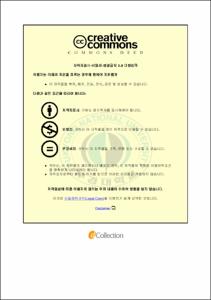Enhancement of the astaxanthin production in Paracoccus haeundaensis
- Alternative Title
- Paracoccus haeundaensis로부터 Astaxanthin 생산 최적화 연구
- Abstract
- 아스타잔틴은 의약, 식품, 사료 사업에서 중요한 물질 중 하나이다. 아스타잔틴을 생산하는 Paracoccus haeundaensis로부터 아스타잔틴의 생산량을 증진시키기 위해서 온도의 변화, 탄소원/질소원의 첨가, 과산화수소수의 첨가 등과 같은 배양조건을 변화시켰다. 온도의 변화를 주었을 때에는 아스타잔틴의 생산량의 증진을 거의 볼 수가 없었다. 탄소원으로 lactose, fructose, glucose, mannitol을, 질소원으로 sodium nitrate, potassium nitrate를 사용하였을 때 아스타잔틴 생산량이 가장 높았다. 탄소원/질소원의 비율을 보았을 때 탄소원인 glucose 3%, 그리고 질소원인 sodium nitrate 1%일 때 생산량이 1.4배 증가하였다. 그리고 산소종 유발물질인 과산화수소수를 0%에서 3%까지 8단계의 농도로 첨가하였는데, 0.3% 첨가하였을 때 가장 높은 생산량을 보였다. 이를 통해 glucose 3%, sodium nitarate 1% 첨가하여 배양중일 때 0.3% 과산화수소수를 투여한 결과 기본배지에서 키운 것에 비해서 아스타잔틴의 생산량이 1.83배 증가한 것을 볼 수 있었다. 배양조건의 변화외 다른 방법인 돌연변이 종 생산을 위해 UV와 ethylmethanesulfate (EMS)를 사용하였다. UV 조사와 EMS 처리시 균주의 생존율은 감소함을 볼 수 있었다. UV조사 20J/20min, EMS 0.4 M처리를 통하여 PUE란 아스타잔틴 생산량이 증진된 돌연변이종을 선별하였고, 이 결과 3.82배의 증가를 볼 수 있었다. 유전적으로 돌연변이 유도체는 향후 산업적으로 아스타잔틴을 대량 생산 시 적합한 방식의 하나일 것으로 사료된다.
Astaxanthin represents a group of valuable molecules for pharmaceuticals, food and feed industries. In order to enhance the production of astaxanthin in Paracoccus haeundaensis, we have used the change of the culture conditions that change culture temperature, addition of carbon/nitrogen sources and hydrogen peroxide on Paracoccus haeundaensis. The changes of culture temperature were not very much influenced by the production of astaxanthin. When carbon sources (lactose, fructose, glucose and mannitol), and nitrogen sources (sodium nitrate and potassium nitrate) were used, the production of astaxanthin was increased. The optimal C/N ratio was 3% carbon and 1% nitrogen, the astaxanthin production was 1.5 folds increased (641.17㎍/g to 973.12㎍/g dry cell weight (DCW)). The cultures were supplemented with eight levels of hydrogen peroxide and carried out in shaken flasks and 3 L aerated fermentors, respectively. When hydrogen peroxide was 1%, the product of astaxanthin was the highest. When H2O2 and C/N sources were the simultaneous added, approximately 1.83 folds (1019.16㎍/g DCW) the production of astaxanthin was increased. Cultures of Paracoccus haeundaensis were exposed to mutagens such as UV and ethylmethanesulfonate (EMS). The results showed that the survival rate of the cells was decreased with the increase in UV exposure time and obtained in EMS concentration. The astaxanthin hyperproduction mutant was PUE by UV irradiation (20 min exposure) with EMS treatment (0.4M concentration). The isolated mutants exhibited an increase of 3.82 folds in astaxanthin contents compared to the production of original strain. A genetically stable mutant stain obtained using mutagen (UV and EMS) may be a suitable candidate for the industrial scale of astaxanthin production.
- Issued Date
- 2011
- Awarded Date
- 2011. 2
- Type
- Dissertation
- Publisher
- 부경대학교
- Alternative Author(s)
- Hee Ju Hwang
- Affiliation
- 부경대학교 대학원
- Department
- 대학원 미생물학과
- Advisor
- 김영태
- Table Of Contents
- INTRODUCTION 1
MATERIALS AND METHODS 4
Microorganisms and seed culture condition 4
The basic culture condition 4
The variation of incubation temperature in culture condition 5
The addition of carbon sources 5
The addition of nitrogen sources and C/N ratio 6
The addition of hydrogen peroxide 6
Mutagenesis and screening of Paracoccus heaundaensis 6
Analytical Method 7
RESULTS 8
The effect of changing culture temperature 8
The addition effect of carbon/nitrogen sources 11
The addition effects of hydrogen peroxide 19
Mutagenesis on Paracoccus heaundaensis 23
DISCUSSION 31
국문초록 33
ACKNOWLEDGEMENT 34
REFERENCES 35
- Degree
- Master
- Files in This Item:
-
-
Download
 Enhancement of the astaxanthin production in Paracoccus haeundaensis.pdf
기타 데이터 / 1.15 MB / Adobe PDF
Enhancement of the astaxanthin production in Paracoccus haeundaensis.pdf
기타 데이터 / 1.15 MB / Adobe PDF
-
Items in Repository are protected by copyright, with all rights reserved, unless otherwise indicated.